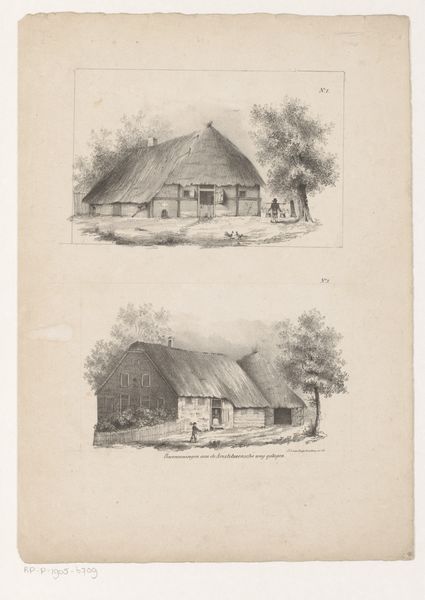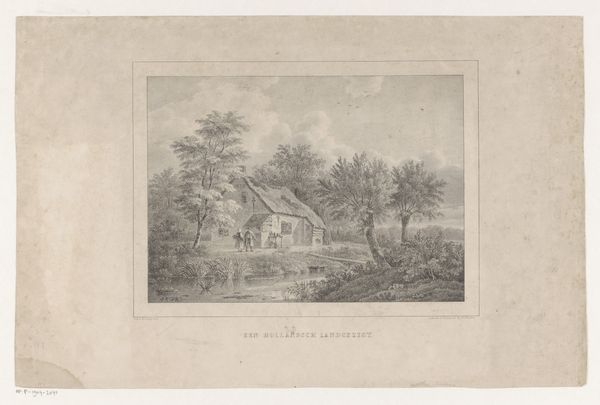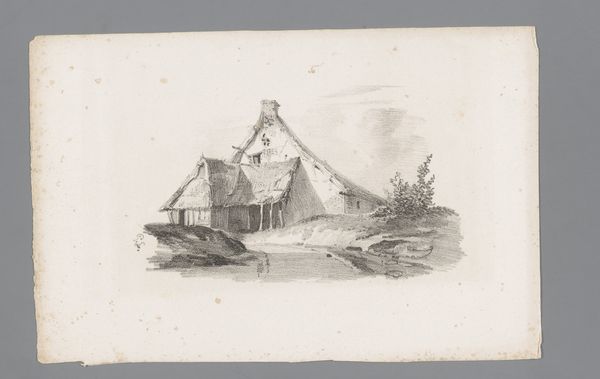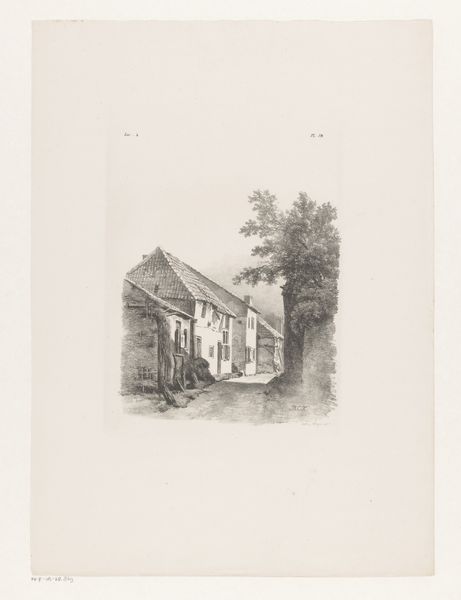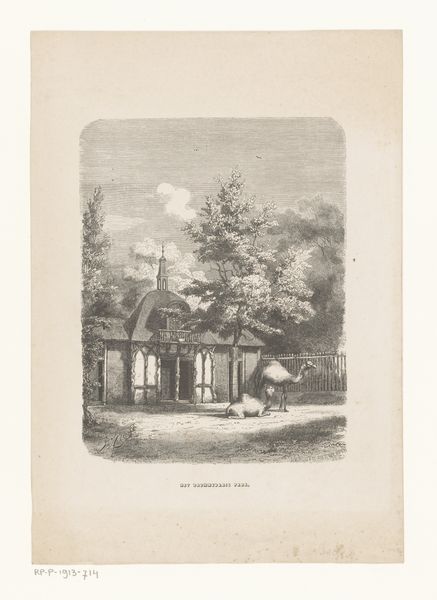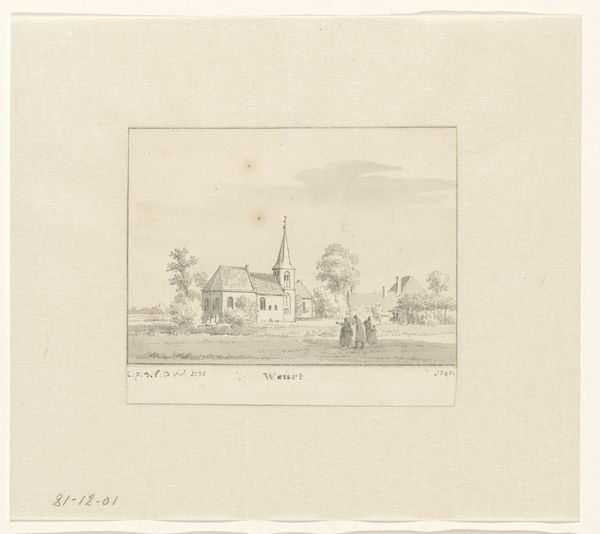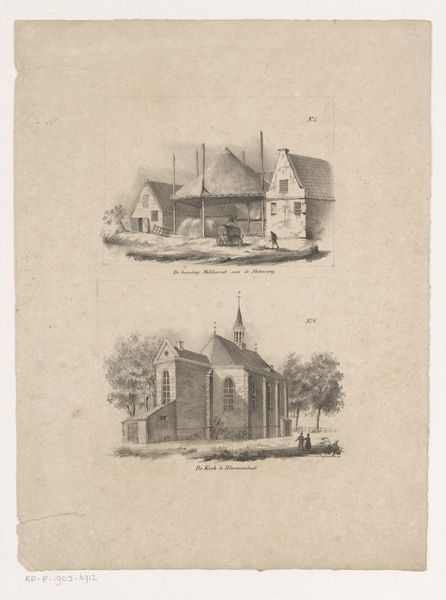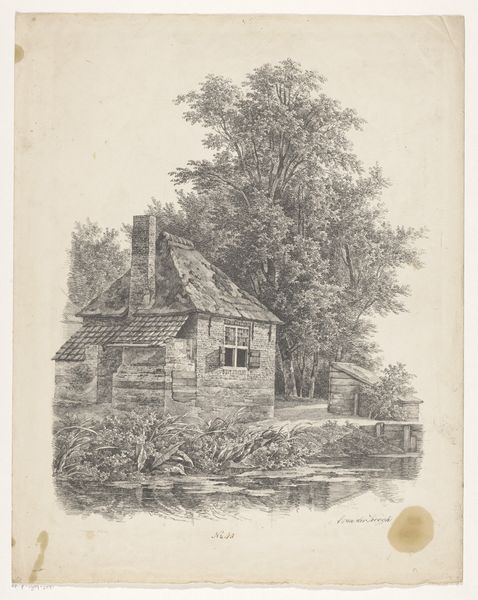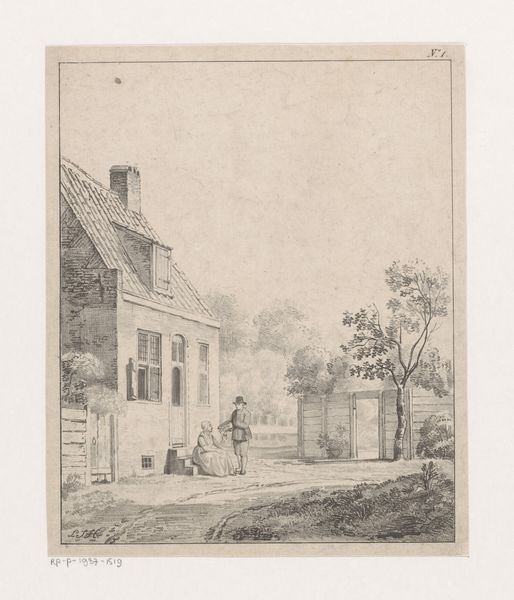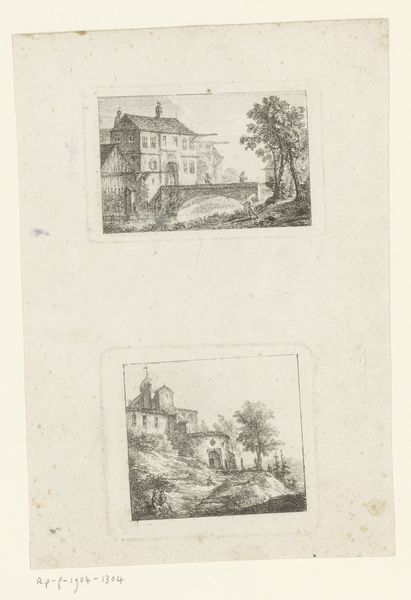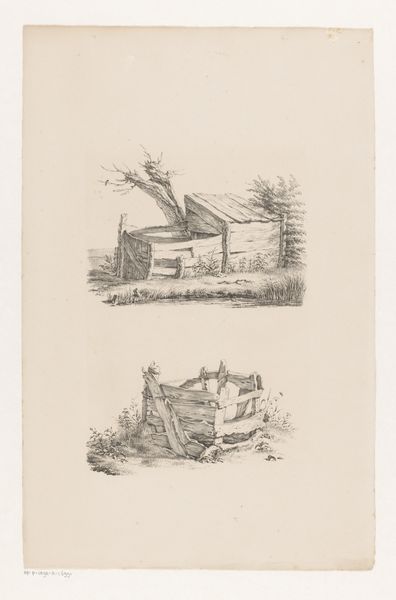
drawing, print, etching
#
drawing
#
dutch-golden-age
# print
#
etching
#
landscape
#
romanticism
#
genre-painting
#
realism
Dimensions: height 352 mm, width 271 mm
Copyright: Rijks Museum: Open Domain
Curator: This print, titled "Twee boerenwoningen" or "Two Farmhouses," by Johannes Cornelis van Pappelendam, dates from around 1825 to 1845. It combines etching and other drawing methods. Editor: It's quite charming! The textures created through etching evoke a peaceful, almost nostalgic feeling. The lines create interesting geometries in what would otherwise be rustic and somewhat irregular structures. Curator: The choice of etching aligns with a tradition of printmaking that allowed for the wide distribution of images. Consider how the accessibility of this medium shapes its purpose and audience. These aren't grand portraits of nobility, but scenes of everyday rural life. Editor: Precisely! The composition is key. Notice the distinct yet complementary renderings of two vernacular structures on the same plane; each farmhouse demonstrates a very keen eye for structural and spatial qualities. The use of line and shading skillfully highlights the interplay of form and light, giving a sense of depth. Curator: Absolutely. This print reflects the Romantic interest in rural life, yet there's a grounded quality to the portrayal of the peasants suggesting the influence of Realism too. Look closely, and you see the detail in the working conditions, perhaps highlighting labor relations. Editor: The balance of elements and delicate shading, even in monochrome, reveals the artist's ability to find beauty and compositional elegance in seemingly unremarkable architecture. Curator: It certainly gives us insight into how rural landscapes and communities were being framed and consumed in the 19th century, not as purely idyllic retreats, but as productive spaces tied to broader economic systems. Editor: Well, seeing the work's intrinsic beauty in those etched lines encourages one to meditate on the subtle variations in textures and structures presented to us. Curator: Indeed. For me, it raises further questions about the role such images played in shaping perceptions of rural communities and the larger sociopolitical implications behind artistic representations of labor and space.
Comments
No comments
Be the first to comment and join the conversation on the ultimate creative platform.

